As communities are flooded with pickleball courts to satiate the hunger for the snack-named game, HOAs and city councils face litigation by those whose lives are disrupted by pickleball’s din. The sport is uniquely noisy due to the hard paddles and balls, and the popping sound the game produces is sharp and persistent. Charles Leahy used his legal expertise and mechanical engineering experience to investigate how communities respond to the pickleball problem. Leahy will present his findings and recommendations for limiting pickleball noise at the 186th ASA Meeting.
Tag: ACOUSTICS
Noise Survey Highlights Need for New Direction at Canadian Airports #ASA186
At the Toronto Pearson International Airport, airplane traffic dropped by 80% in the first few months of lockdown during the COVID-19 pandemic., and in early 2020, the NVH-SQ Research Group out of the University of Windsor surveyed residents living around the airport to gauge how their annoyance levels changed with the reduction in noise.
Building a Better Sarcasm Detector #ASA186
Sarcasm is notoriously tricky to convey through text, and the subtle changes in tone that convey sarcasm often confuse computer algorithms as well, limiting virtual assistants and content analysis tools.
Spider Silk Sound System #ASA186
Researchers from Binghamton University investigated how spiders listen to their environments through webs and found that the webs match the acoustic particle velocity for a wide range of sound frequencies.
To Sound like a Hockey Player, Speak like a Canadian #ASA186
Hockey players are famous for their distinctive jargon, but while researching this phenomenon, linguist and hockey player Andrew Bray realized another interesting pattern in hockey speech: American hockey players adopted aspects of Canadian English pronunciations.
Analyzing Androgynous Characteristics in an Emperor Penguin Courtship Call #ASA186
In the emperor penguin courtship call, male vocalizations are composed of long, slow bursts with lower frequency tones than the female version. But calls of SeaWorld San Diego male penguin E-79 defied this binary. Also unusual was this penguin’s male companion, E-81. The pair “kept company” and sometimes exhibited ritual courtship displays.
Courtship Through Flute Song in Indigenous Southern Plains Culture #ASA186
In traditional Indigenous Southern Plains culture, a love story begins with an original ballad performed on the flute. In order to win a lover’s affection, and respect among the tribe, each pursuer must compose one good flute serenade.
Intense Ultrasound Extracts Genetic Info for Less Invasive Cancer Biopsies #ASA186
At the University of Alberta, researchers explored how intense ultrasound can release biological indicators of disease from cells. These biomarkers can help identify different types of cancer and inform the subsequent therapy.
ASA Invites Media to Acoustics Meeting in Ottawa, May 13-17
The Acoustical Society of America and the Canadian Acoustical Association are co-hosting a joint meeting May 13-17 at the Shaw Centre/Westin Ottawa Hotel.
Sonic Youth: Healthy Reef Sounds Increase Coral Settlement
Researchers at WHOI demonstrated that replaying healthy reef sounds could potentially be used to encourage coral larvae to recolonize damaged or degraded reefs.
Boom! Detecting Gregarious Goliath Groupers Using Their Low-frequency Pulse Sounds
From growls to booms, whales, fish and crustaceans all produce sounds. Selecting the gregarious Goliath grouper, researchers deployed a novel automated detector and localization model to find underwater marine organisms using their low-frequency pulse sounds.

Solar-Powered Balloons Detect Mysterious Sounds in the Stratosphere #ASA184
To reach the stratosphere, Daniel Bowman of Sandia National Laboratories and his collaborators build relatively simple, solar-powered balloons that span 6 to 7 meters across. After releasing the balloons, they track their routes using GPS and use them to collect data and detect low-frequency sound with microbarometers. Rarely disturbed by planes or turbulence, the microphones on the balloons pick up a variety of sounds unheard anywhere else. Bowman will present his findings using these hot air balloons to eavesdrop on stratospheric sounds at the upcoming 184th ASA Meeting.
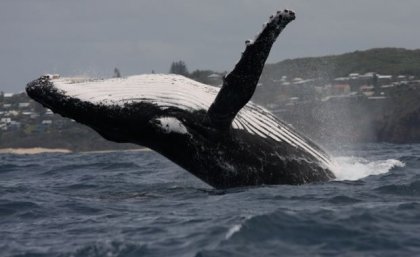
Singing humpback whales respond to wind noise, but not boats
A University of Queensland study has found humpback whales sing louder when the wind is noisy, but don’t have the same reaction to boat engines. Research lead Dr Elisa Girola from UQ’s Faculty of Science said this quirk of whale evolution could have consequences for breeding and behaviour.
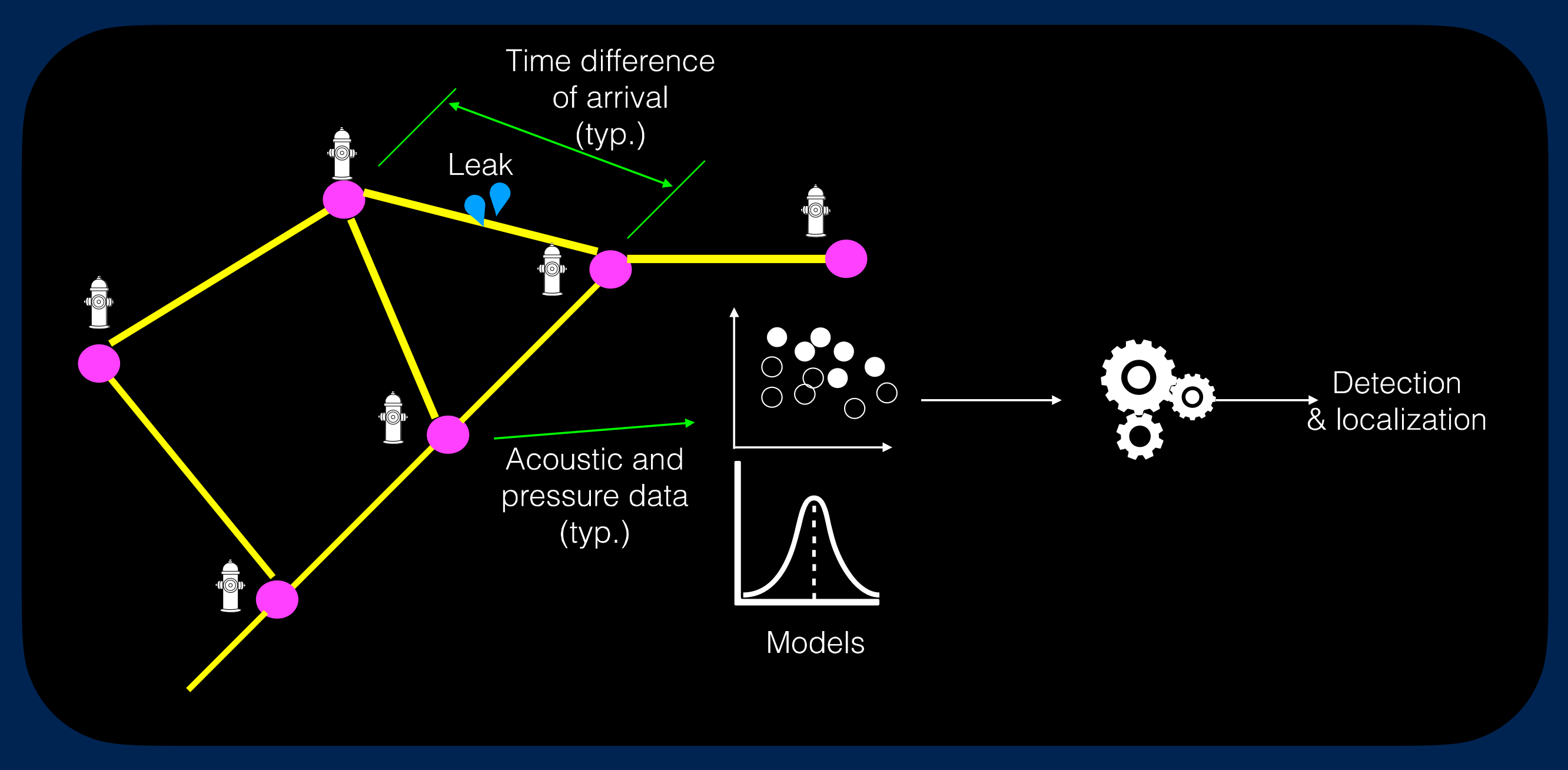
Fire Hydrant Hydrophones Find Water Leaks #ASA184
Acoustic monitoring is the go-to solution for locating a leak in a large urban pipe network, as the sounds from leaks are unique and travel far in water, but even this method struggles in complex systems. To tackle the problem, Pranav Agrawal and Sriram Narasimhan from UCLA developed algorithms that operate on acoustic signals collected via hydrophones mounted on fire hydrants. In doing so, the team can avoid costly excavation and reposition the devices as needed. Combined with novel probabilistic and machine-learning techniques to analyze the signals and pinpoint leaks, this technology could support water conservation efforts.
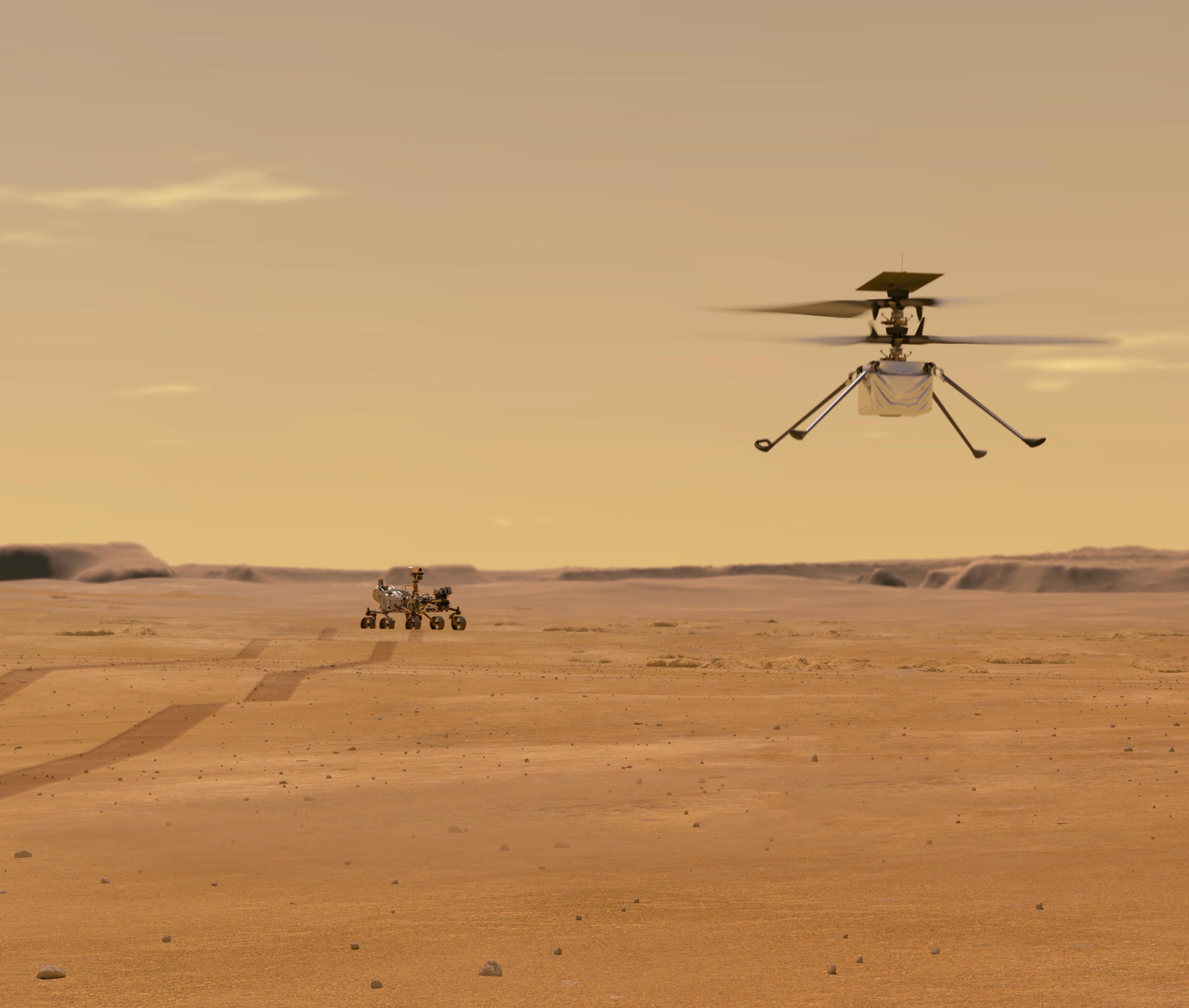
These Sounds Are Out of This World! #ASA184
Scientists can harness sound on other worlds to learn about properties that might otherwise require a lot of expensive equipment, like the chemical composition of rocks, how atmospheric temperature changes, or the roughness of the ground. Extraterrestrial sounds could also be used in the search for life. Timothy G. Leighton from the University of Southampton has designed a software program that produces extraterrestrial environmental sounds and predicts how human voices might change in distant worlds. He will demonstrate his work at the upcoming 184th ASA Meeting.
Songs of the Oceans Raise Environmental Awareness #ASA184
At the 184th ASA Meeting, Colin Malloy of Ocean Network Canada will present his method to transform ocean data into captivating, solo percussion songs. He employs sound from hydrophones and introduces elements inspired by ocean-related data such as temperature, acidity, and oxygenation. For example, in his piece, Oil & Water, Malloy represents the impact of oil production on the oceans. He plays an eerily catchy melody on steel drums and inserts noise to represent oil production over the past 120 years.
Hey Siri, Can You Hear Me? #ASA184
At the 184th ASA Meeting, Georgia Zellou and Michelle Cohn of the University of California, Davis will describe experiments to investigate how speech and comprehension change when humans communicate with AI. They examined how people adjust their voice when communicating with an AI system compared to talking with another human and, on the listening side, how what a device sounds like impacts how well listeners will understand it.

A Cocktail Party of 3D-Printed Robot Heads #ASA184
Imagine a cocktail party full of 3D-printed, humanoid robots listening and talking to each other. That seemingly sci-fi scene is the goal of the Augmented Listening Laboratory at the University of Illinois Urbana-Champaign. With precise control over the simulated subjects, the researchers can adjust the parameters of the experiment and even set the machines in motion to simulate neck movements. They will describe the talking human head simulators, and their work investigating how humans receive sound and developing audio technology, at the 184th ASA Meeting.

Beyond Necessity, Hearing Aids Bring Enjoyment Through Music #ASA184
At the 184th ASA Meeting, Emily Sandgren and Joshua Alexander of Purdue University will describe experiments to determine the best hearing aids for listening to music. To test and compare, they took over 200 recordings of music samples as processed by hearing aids from seven popular manufacturers. They asked study participants to rate the sound quality of these recordings and found that the hearing aids had lower ratings for music than their control stimuli. The researchers found bigger differences in music quality between hearing aid brands than between speech and music programs.
Acoustical Society of America Press Conferences Livestreamed from Chicago, May 9 #ASA184
The 184th ASA Meeting will include three press conferences on Tuesday, May 9. The in-person presentations will also be livestreamed and recorded. Topics will focus on a wide range of newsworthy sessions, including 3D-printing head simulators, tracking immune cells with ultrasound, investigating the impact of skin color on breast cancer diagnosis, mimicking insects to create miniature microphones, and locating leaks in water networks. Reporters can register for in-person or virtual attendance.
Lead Vocal Tracks in Popular Music Go Quiet
Scientists carried out an analysis of hundreds of popular song recordings from 1946 to 2020 to determine the lead vocal to accompaniment ratio, or LAR. The study considered the four highest-ranked songs from the Billboard Hot 100 chart for each year and the results show that, contrary to expectations, the LAR for popular music decreased over the decades in question. This means that, relative to their bands, lead singers are getting quieter.
It’s not as difficult as you think to shout upwind
Researchers unveil and explain a common-sense misunderstanding
Filtering pollution: A microfluidic device for collecting microplastics via acoustic focusing
Plastic debris particles smaller than 5 mm in size, known as microplastics (MPs), are a serious environmental concern.
Acoustical Society of America Invites Media to Chicago Meeting, May 8-12
ASA will hold its 184th meeting May 8-12 in Chicago, offering in-person and hybrid sessions throughout the week. The scientific conference brings together acousticians, researchers, musicians, and more from around the world, who will describe their work on topics that include measuring the calls of Puerto Rican coqui frogs, communicating with artificial intelligence, capturing the sounds of the stratosphere, simulating sounds on other planets, and ensuring linguistic justice by considering the unique aspects of African American English. Conference highlights can be found on social media by searching the #ASA184 hashtag and reporters are invited to attend in-person and hybrid sessions at no cost.
Call for Nominations – Acoustical Society of America Science Communication Awards
The Acoustical Society of America offers Science Communication Awards in Acoustics to recognize excellence in the communication of acoustics-related topics to a popular audience. The 2023 award cycle will accept content created between Jan. 1, 2021, and Dec. 31, 2022; if you have seen, heard, or created something acoustics-related during this time frame, please nominate it! Each nominated entry will be judged according to its general accessibility, relevance to acoustics, accuracy, and quality. Nominations will be accepted until March 15, 2023.
Music from the pre-electric recording era brought to life using historic tech on new Pennine Records release
The ghostly sounds of pre-electric recordings can be heard on a new album issued by the University of Huddersfield Press.
Improving Child Development by Monitoring Noisy Day Cares #ASA183
At the 183rd ASA Meeting, Kenton Hummel will describe how soundscape research in day cares can improve child and provider outcomes and experiences. He and his team collaborated with experts in engineering, sensing, early child care, and health to monitor three day care centers for 48-hour periods. High noise levels and long periods of loud fluctuating sound can negatively impact children and staff by increasing the effort it takes to communicate. In contrast, a low background noise level allows for meaningful speech, which is essential for language, brain, cognitive, and social/emotional development.
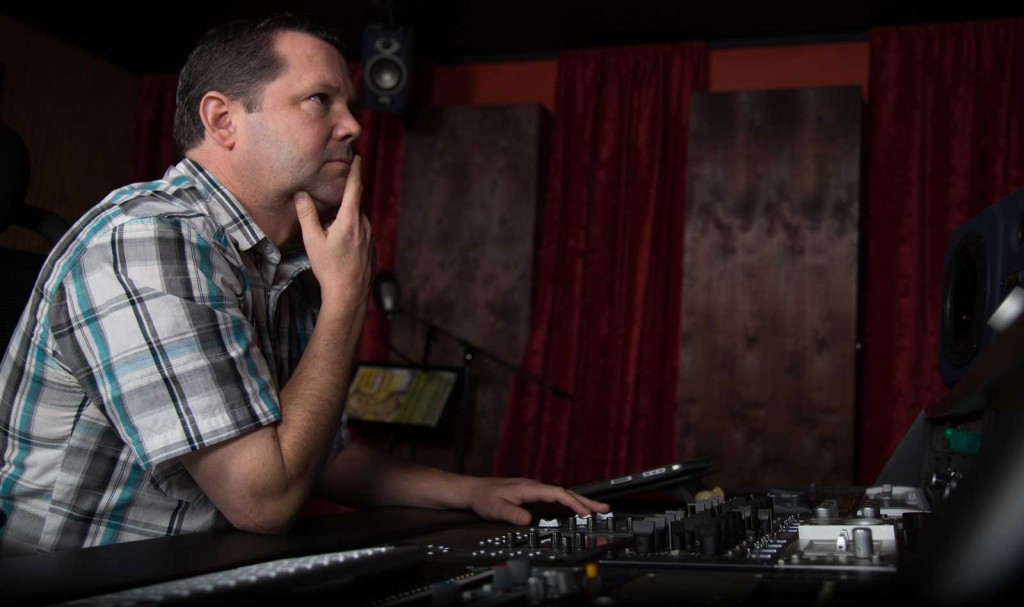
How Behind-the-Scenes Sound Mixing Makes Movie Magic #ASA183
Modern movie sound mixing uses techniques like impulse responses to reproduce dialogue and other sounds. These methods are crucial to align what moviegoers see and hear and keep them engaged in the story. At the 183rd ASA meeting, Jeffrey Reed of Taproot Audio Design will demonstrate the behind-the-scenes audio engineering required to re-create the acoustics of movie sets and locations, sharing short clips of film to compare the original recording to the studio mixed product.
Helping Acoustic Concepts Resonate with Students #ASA183
“I am sitting in a room, different from the one you are in now.” With these words, Alvin Lucier begins a fascinating recording where his voice warps and becomes indistinguishable over time, solely because of how sound reflects in the room. For physics students, this audio can be used to reveal details of the surrounding room and teach important lessons about acoustic resonance. Andy Piacsek, of Central Washington University, will discuss how he employs Lucier’s project in the classroom during his talk, “Students are sitting in a room.”
Cultivating a Music Studio to Sound Like an Indoor Forest #ASA183
At the 183rd ASA Meeting, researchers will describe “The evolution of Blackbird Studio C,” a space designed to provide an accurate and immersive mixing and production environment. They wanted to create a unique, ambient anechoic space that would allow ambient sound to decay equally across different frequencies and be free from interfering reflections, making it sound like an indoor forest. So they covered the walls and ceiling with primitive root diffusers. This technology causes sound energy to diffuse and radiate in many directions.
Why Those Sounds From Your Upstairs Neighbor Are So Annoying #ASA183
At the 183rd ASA Meeting, Markus Mueller-Trapet will describe experiments designed to simulate and measure the perceived annoyance experienced from noisy neighbors in multi-unit residential buildings. He and his team provided a living room-like situation and recorded impact sounds of objects dropping and people walking. They then presented the recordings to study participants, using different playback techniques and virtual reality, and created an online survey. The team hopes to provide guidance to architects and building code developers.
Supersonic Travel, Without the Sonic Boom #ASA183
At the 183rd ASA Meeting, Gautam Shah will discuss plans to test a supersonic aircraft with technology to alter how supersonic shock waves behave and reduce sonic booms. NASA will conduct a series of flights over various communities across the U.S., and Shah and his team will measure the sound of the aircraft and conduct public surveys to understand the public response to different noise levels. By providing this information to regulatory agencies, the group hopes to inform an overland supersonic sound standard.
3D-Printed Violins Bring Music into More Hands #ASA183
Creating 3D-printed, low-cost, durable violins for music students, researchers have explored the factors that result in the best violin sounds and performed a concerto composed specifically for 3D-printed instruments. The violin was created in two sections. The body is made of a plastic polymer material and designed to produce a resonant tone, while the neck and fingerboard are printed in smooth ABS plastic to be comfortable in the musician’s hands. The result is a violin that produces a darker, more mellow sound than traditionally made instruments.
Listen to the Toilet — It Could Detect Disease #ASA183
Researchers describe how a noninvasive microphone sensor could identify bowel diseases without collecting any identifiable information. They tested the technique on audio data from online sources, transforming each audio sample of an excretion event into a spectrogram, which essentially captures the sound in an image. The images were fed to a machine learning algorithm that learned to classify each event based on its features. The algorithm’s performance was tested against data with and without background noises.
Shhhh … Speaking More Quietly in Restaurants Means Everyone Can Be Heard #ASA183
In a crowded restaurant, the sounds of conversations bounce off walls, creating background noise. Each individual wants to be heard, so they end up talking a little bit louder, which increases the overall din. Eventually – barring an interruption – the system gets loud enough to reach the limit of the human voice. Braxton Boren will discuss this cycle, called the Lombard effect, and how it can be disrupted in his presentation, “A game theory model of the Lombard effect in public spaces.”

Media Invited to Explore Urban Acoustics with a ‘Sound Walk’ of Nashville #ASA183
The 183rd ASA Meeting will include an urban sound walk, in which media are invited to explore Nashville, its sounds, and efforts to design projects that enhance the sonic environment and mitigate noise. Following the walk, ASA will host a workshop on soundscape design and how planning can be used to create sustainable, walkable, livable urban environments. The walk is an opportunity for media and anyone interested in urban soundscapes, while the workshop is intended for city planners, architects, officials, and others whose work lies on the interface between sound and the community. All are welcome.
Media Invited to Acoustical Society of America Meeting in Nashville, Dec. 5-9
The Acoustical Society of America (ASA) will hold its 183rd meeting Dec. 5- 9 at the Grand Hyatt Nashville Hotel. ASA183 will be an in-person meeting with several hybrid sessions where remote attendance will also be possible. Reporters are invited to attend the meeting at no cost.
New study shows spiders use webs to extend their hearing
A newly published study of orb-weaving spiders — has yielded some extraordinary results: The spiders are using their webs as extended auditory arrays to capture sounds, possibly giving spiders advanced warning of incoming prey or predators.
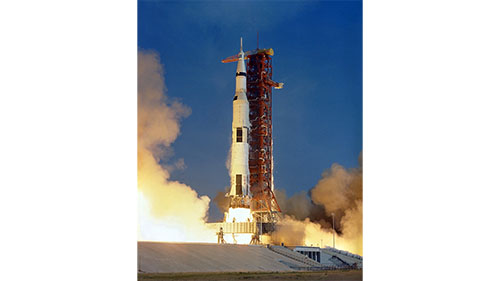
Saturn V Was Loud But Didn’t Melt Concrete
Abundant internet claims about the acoustic power of the Saturn V suggest that it melted concrete and lit grass on fire over a mile away, but such ideas are undeniably false. In The Journal of the Acoustical Society of America, researchers used a physics-based model to estimate the rocket’s acoustic levels and obtained a value of 203 decibels, which matched the limited data from the 1960s. So, while the Saturn V was extremely loud, that kind of power is nowhere near enough to melt concrete or start grass fires.
Update Noise Regulations to Protect Seals, Porpoises
In The Journal of the Acoustical Society of America, scientists in Denmark review recent experiments and find noise regulations may need to be changed to protect porpoises, seals, and other sea-dwelling mammals. Current guidance for seals and porpoises is based on few measurements in a limited frequency range; the guidance is still valid for these frequencies, but investigators found substantial deviations in recent studies of the impact of low frequency noise on seals and high frequency noise on porpoises.
‘Urban Canyons’ Prolong Sonic Booms in Cities
Recent efforts have sought to make low-boom supersonic aircraft, but noise issues due to sonic booms may become more pronounced in cities, where buildings form canyons that distort the booms. In The Journal of the Acoustical Society of America, researchers conducted simulations comparing how sonic booms reflect differently over a single building, two neighboring buildings, and multiple buildings spaced at regular intervals. The researchers found the wider the streets compared to the height of buildings, the less booms are affected. Narrower streets introduced more complex boom propagation.
Turning Hearing Aids into Noise-Canceling Devices #ASA182
For someone using an assistive listening device in a crowded place, it might make little difference whether the device is on or off. Nearby conversation directed at the user might be drowned out by distant conversation between other people, ambient noise from the environment, or music or speech piped through a loudspeaker system.
Corey and his colleagues worked to eliminate at least one source of noise, the one emanating from loudspeakers or other broadcast systems.
Acoustic Sensors Pinpoint Shooters in Urban Setting #ASA182
As part of the 182nd ASA Meeting, Luisa Still, of Sensor Data and Information Fusion, will discuss the important factors in determining shooter localization accuracy. In an urban setting, buildings or other obstacles can reflect, refract, and absorb sound waves, which can severely impact said accuracy. Preemptively predicting this is crucial for mission planning in urban environments. Still and her team used geometric considerations to model acoustic sensor measurements. This modeling, combined with information on sensor characteristics, the sensor-to-shooter geometry, and the urban environment, allowed them to calculate a prediction of localization accuracy.
DeepSqueak Tool Identifies Marine Mammal Calls #ASA182
As the size and number of acoustic datasets increase, accurately and quickly matching the bioacoustics signals to their corresponding sources becomes more challenging and important. This is especially difficult in noisy, natural acoustic environments. At the 182nd ASA Meeting, Elizabeth Ferguson, from Ocean Science Analytics, will describe how DeepSqueak, a deep learning tool, can classify underwater acoustic signals. It uses deep neural network image recognition and classification methods to determine the important features within spectrograms, then match those features to specific sources.
Making Racetrack Noise Bearable with Physics #ASA182
Raceways can produce noise from many kinds of vehicles, such as race cars, street race cars, racing motorcycles, go-karts, monster trucks, and cheering spectators. During the 182nd ASA Meeting, Bonnie Schnitta, from SoundSense LLC, will discuss her efforts to reduce the noise in a Michigan neighborhood from a nearby raceway. She and her team examined several different types of barriers, including berms, acoustic barriers, or dense foliage, to block that noise from reaching surrounding houses and businesses.
Matt Ajemian, Ph.D., Receives Prestigious NSF CAREER Award
Matt Ajemian, Ph.D., has received a $1,103,081 NSF CAREER grant for a project that will build fundamental knowledge on where and when large shell-crushing predators feed in order to ensure a sustainable future for shellfish species. Further, the work can provide guidance to shellfish restoration programs that are currently “flying blind” with respect to predation risk.
To Better Understand Speech, Focus on Who Is Talking
Researchers have found that matching the locations of faces with the speech sounds they are producing significantly improves our ability to understand them, especially in noisy areas where other talkers are present. In the Journal of the Acoustical Society of America, they outline a set of online experiments that mimicked aspects of distracting scenes to learn more about how we focus on one audio-visual talker and ignore others.
Cylindrical Phononic Crystals Sense Physical, Chemical Properties of Transported Liquids
Phononic crystals are an innovative resonant platform for sensing and understanding the volumetric properties of liquids, attracting a growing interest from researchers. In The Journal of Applied Physics, by AIP Publishing, researchers from France and Germany propose the design of a tubular phononic crystal (TPC) for the purpose of sensing the biochemical and physical properties of a liquid filling the hollow part of the tube.
Voices of Reason? Study Links Acoustic Correlations, Gender to Vocal Appeal
What makes a voice attractive? The question is the subject of broad interest, with far-reaching implications in our personal lives, the workplace, and society. In The Journal of the Acoustical Society of America, scientists describe research that explores the interactions between gender and articulatory precision to gauge vocal attractiveness. They were surprised to find a sizable gender difference in speech intelligibility.
Tweezers of sound can pick objects up without physical contact
Hemispherical array of ultrasound transducers lifts objects off reflective surfaces